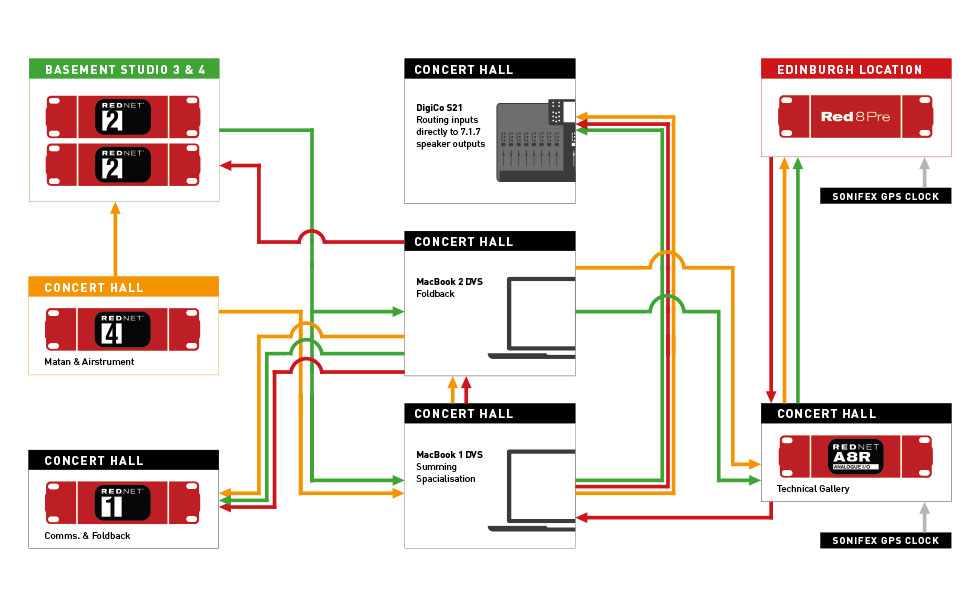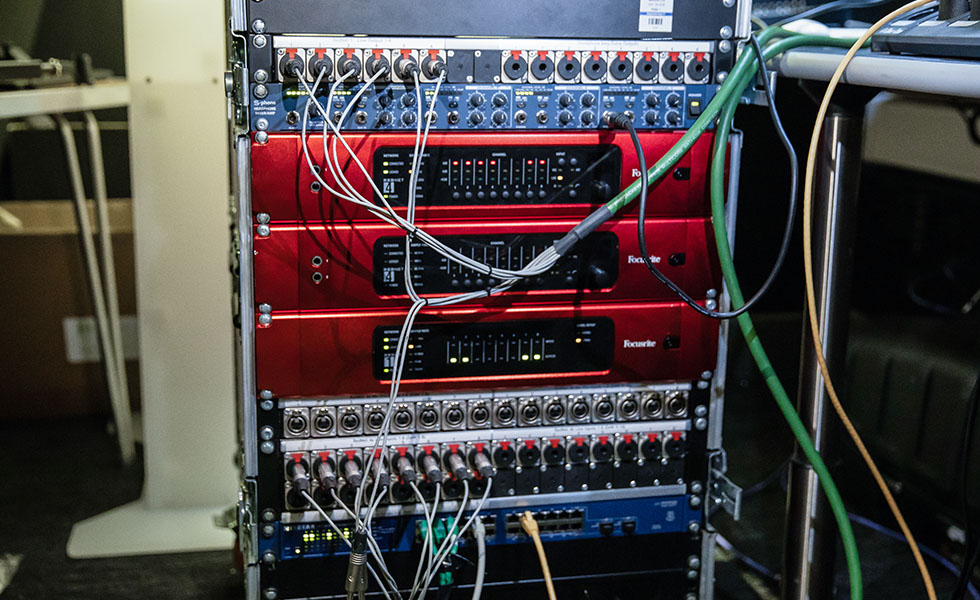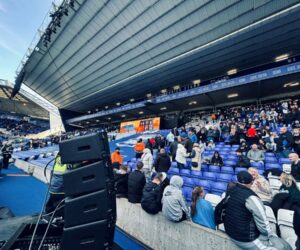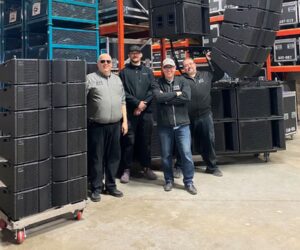The recent Innovation in Music, an annual conference that’s curated and hosted by the London College of Music at the University of West London (UWL), presented a demonstration of multi-site, long distance, real-time collaboration with full-resolution audio that was implemented with Audinate Dante-equipped Focusrite RedNet 4 interfaces and made possible by updates to Audinate Dante Domain Manager.
In recent years, a recurring conference theme has been networked audio, and in the latest event, conference chair Professor Justin Paterson devised a keynote event combining two traditionally mutually exclusive network application objectives – real-time creative collaboration at studio audio quality and long distance collaboration.
Titled Video Killed the Radio Star: How the Future Began, the combined talk and performance was a 45-minute immersive 7.1.7 audio piece from the Radio Science Orchestra featuring live instruments such as harp, theremin, modular synth and ondes Martenot. Live VJ projections were created that used the audience as “human pixels.” The five-piece Radio Science Orchestra was distributed across four performance spaces on the West London UWL campus, accompanied by an additional artist in the main auditorium. An additional musician some 400 miles away at Edinburgh Napier University was connected via Dante using a Focusrite Red 4Pre.
Dante and front-of-house engineer for the performance, UWL’s Scott Harker, observes, “Admittedly, working in this way, with one of the musicians being 400 miles away, was odd at first rehearsal. Ultimately when it came to my mix, the routing and workflow, it was no different, just like any other room.”
The initial release of Dante Domain Manager opened the door to Dante connections across long-distance networks. Last year’s update to v1.1 addressed the critical issue of clock synchronization through support for SMPTE 2110 / AES67 compliant devices in Dante workflows, and support for GPS Synchronization. AES67 is a low-level open interoperability standard, rather than a networking solution in its own right. SMPTE 2110 is an evolving comprehensive media networking standard for audio, video and ancillary data over IP. Each media element of a SMPTE 2110 workflow uses a standard of its own; AES67 is specified for SMPTE 2110 audio.
Dr. Paul Ferguson of Edinburgh Napier University, who authored previous conference papers informing the experiment, looked at gear that meets the newly-widened definition of “SMPTE 2110 / AES67 compliant” to find a suitable technology solution for long distance clocking. The Sonifex AVN-GMCS, an AES67 compliant grandmaster AoIP clock derives its own absolute time from the atomic clocks built into GPS satellites – global delivery of ultra-precise, unified time is one of the most important, and arguably most overlooked, functions of GPS satellites. “With Dante Domain Manager v1.1,” Ferguson explains, “we can now configure our setup such that our RedNet devices are assigned to geographic ‘zones’ that have a grandmaster clock in each zone. In so doing, we bypass the issue of, and the problems attached to, sending clock over vast distances using Dante. Everything is rock-solid.”

Latency became the next consideration for a group of musicians playing live through a variety of RedNet interfaces, receiving cue mixes and sending their performances via Dante to front-of-house. Here, Ferguson draws a familiar parallel for many pro audio users, “Much like when setting buffer size on a DAW, it’s a trade-off between acceptable latency for the performing musicians versus system performance.”
“We simply set the buffer on our RedNet interfaces to 20 ms at each side,” Ferguson recalls, “40 ms overall. A little longer than you’d ideally want for drums, but safe, and absolutely usable for the synthetic textures we were getting from Edinburgh.”
Every piece of technology employed for the experimental and boundary-pushing performance was a current, off-the-shelf software or hardware product. The success of the demonstration has clear implications for equivalent applications in commercial studios, broadcast and post production.

Ferguson concludes, “Inspired by our success at inMusic19, we have just successfully tested Focusrite/Dante and GPS between Edinburgh and Berlin. Even with today’s connectivity options, we’ve shown here that the technology to collaborate creatively over long distances using Dante is supported and exists today.”




















